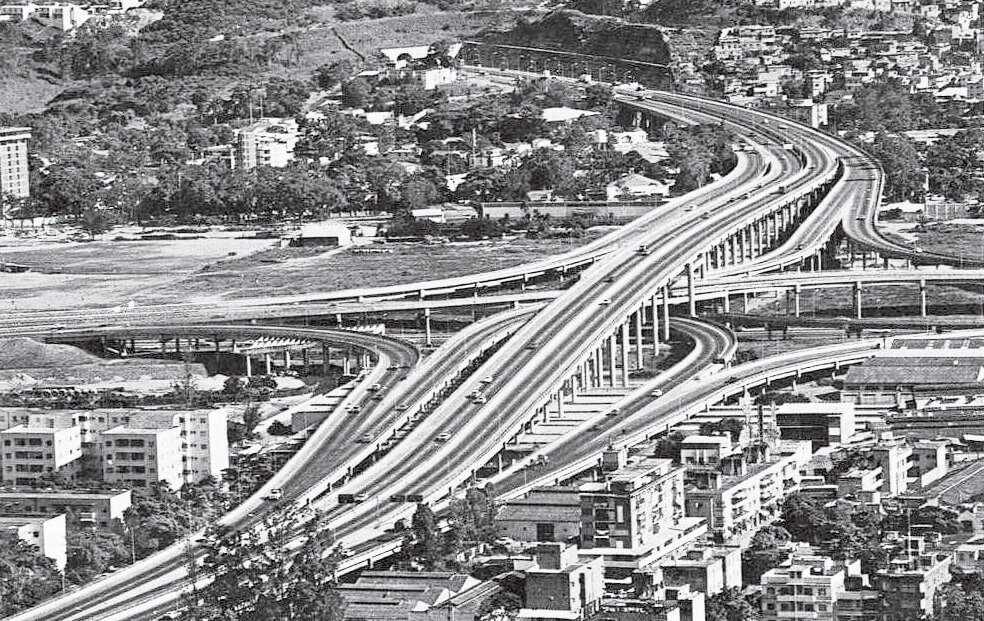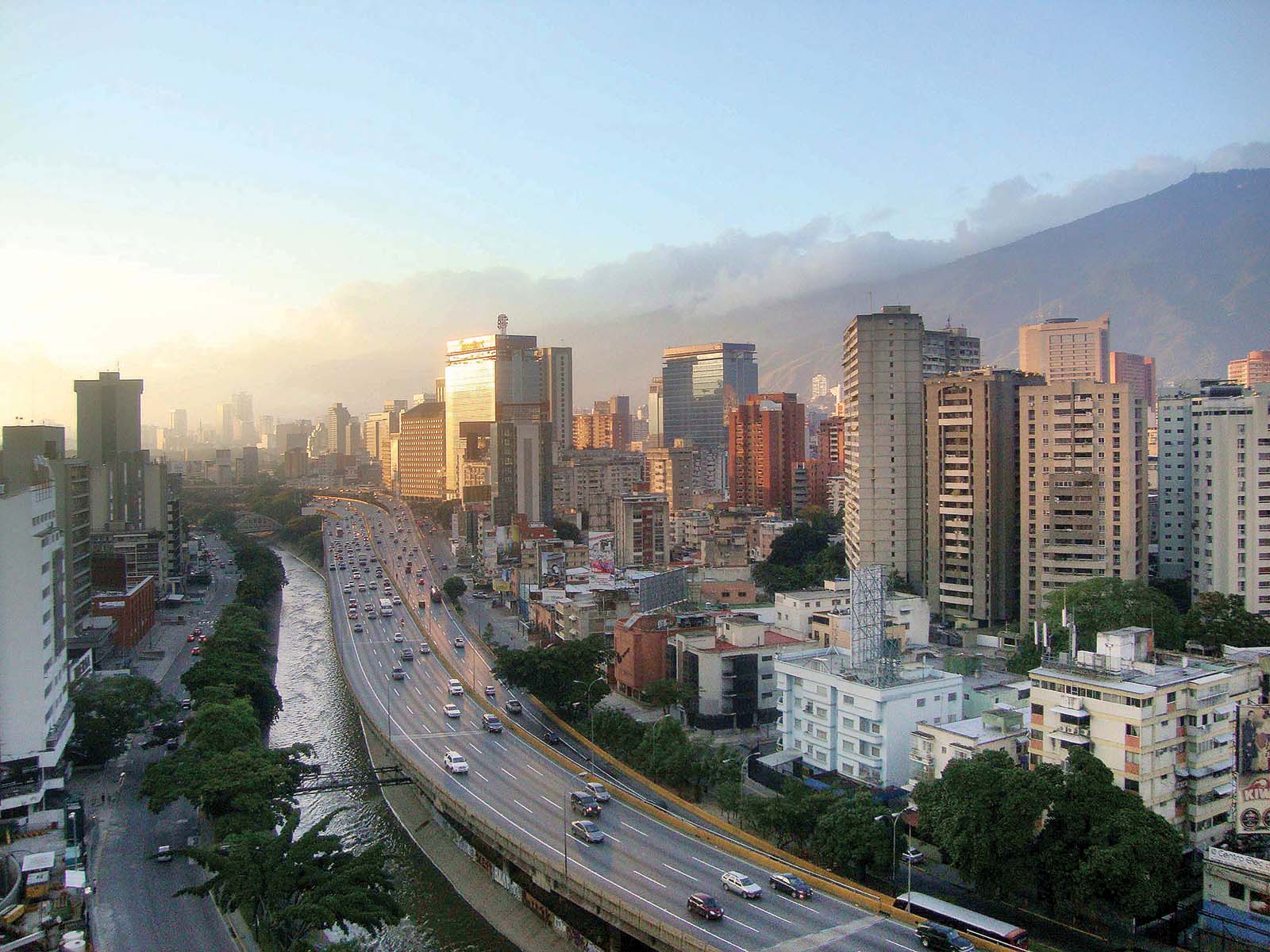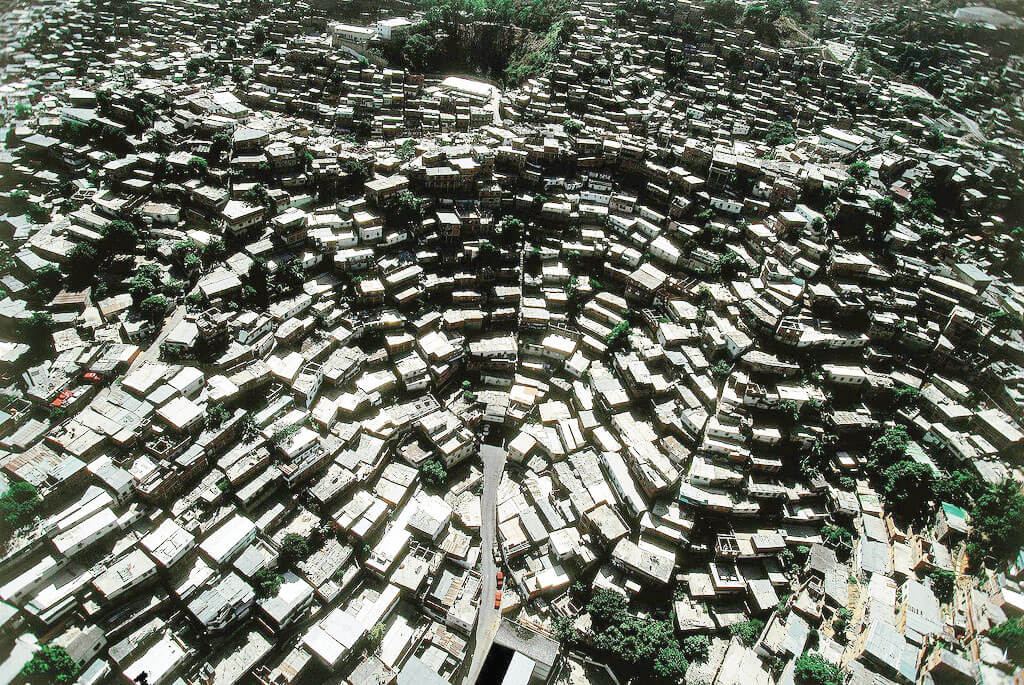Aereal photography of Caracas, 2009HC-64
Growth without renovation spirit
From these years forth it is impossible to identify the city with a single vision, speech, style or mission. There does not seem to be a plan capable of showing the actual status of the metropolis or the future plans for the city. Caracas has stopped being the sum of many paths, contradictions, times and textures.
In the last twenty five years of this century the strength of the urban proposals diminishes, or at least they are not implemented with the same strength, scale and proportion as they were in times of Guzmán Blanco, Medina or Pérez Jiménez. The city is determined to grow without a true spirit of renovation. The highway network that started with the roadway plan of 1951 will turn into the intervention with the greatest importance and presence in the transformation of the city’s structure, It will also be the most characteristic and distinguished aspect of our urban planning. The new system of highway connections and freeways, with names such as «the spider» or the «centipede», interrupts, cuts, modifies, overpowers and divides the city with its own aesthetics and set of laws.
On the other hand, in the second half of the XX century, developments outside of the urban planning and services legal framework start taking over the metropolitan area. The city had already lost the idea of its own urban language, which would be traditional, of the people, and common; as a consequence, all that which is built outside of the new laws will be done in a disorganized way, with no tradition to provide its structure. Nonetheless, there is an urban legislation, a land registry and a few architectural norms that intend to organize the city. However, at the same time, a parallel city grows as a provisional camp that is not even reflected in the new plans. Little by little that second city will become larger by occupying more territory, and housing more citizens than the legalized city.
This marginal city will go on configuring a true multiform and single-function, a system of walkways, roads, and stairways shaping true labyrinths that feed these emergency housing developments. The proportion between this new housing use and other characteristic functions of a city will be quite revealing, since this type of urban growth will have the most accelerated evolution in the decades to come.

HC-62

HC-63

HC-64

CG

HC-65


